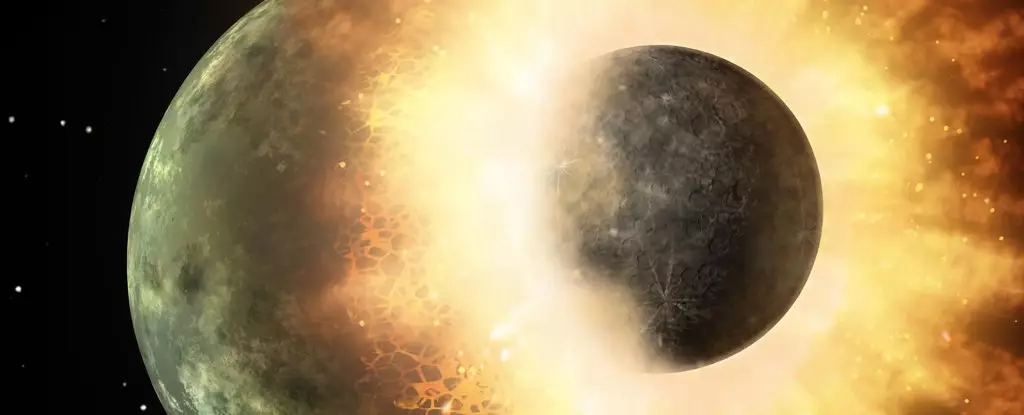The formation of the Moon has long been a topic of scientific debate, with various theories proposed over the years. However, recent research suggests that a Mars-sized object collided with Earth billions of years ago, leading to the creation of our closest celestial neighbor. The traditional model posits that the Moon formed around 4.5 billion years ago following a massive impact between Earth and a protoplanet known as Theia. Debris from this collision eventually coalesced to form the Moon, with evidence from Earth’s mantle and lunar rocks supporting this theory.
A recent study by Stephen Lepp and his team from the University of Nevada introduces some intriguing nuances to the existing understanding of the Moon’s formation. The research delves into the dynamics of the material ejected from the impact event, shedding light on how the Moon evolved in its early stages. Initially, the Moon orbited Earth at a significantly closer distance than it does today, gradually moving away over time due to tidal interactions between the two bodies.
As the newly formed Moon cooled, its molten magma surface solidified to give rise to the distinct crust, mantle, and core structure that we observe today. The lunar surface bore witness to heavy bombardment, resulting in impact basins and craters. Additionally, volcanic activity contributed to the formation of lunar maria, shaping the Moon’s topography over millions of years.
The Moon’s orbit around Earth has evolved into a slightly elliptical path, with an eccentricity that allows its distance from Earth to vary between 364,397 km and 406,731 km. Early on, the Earth-Moon system experienced instability, with particles in the accreting Moon following erratic paths. Nodal precession, a phenomenon where orbital intersections slowly shift around the orbit, played a significant role in shaping the orbits of particles in the debris cloud.
One of the key findings of the research is the stability of polar orbits in the Earth-Moon system. The team demonstrated that particles in polar orbits were the most stable, especially in the aftermath of the Moon’s formation. However, as the Earth and Moon drifted further apart, the space for stable polar orbits diminished. Today, with the Moon at its current distance, polar orbits are no longer viable due to the dominance of nodal precession driven by the Sun.
The presence of material in polar orbits can influence the eccentricity growth of binary systems like the Earth and Moon. If a significant amount of material were to enter a polar orbit, it could lead to an increase in the system’s eccentricity. This highlights the complex interplay between orbital dynamics and celestial body formation, offering new insights into the evolution of the Earth-Moon system.
The study by Lepp and his team provides a fresh perspective on the formation and evolution of the Moon, challenging established theories and offering novel insights into the dynamics of our celestial companion. By exploring the stability of polar orbits and the impact of nodal precession, the research contributes to our understanding of how the Earth-Moon system has evolved over billions of years.


Leave a Reply